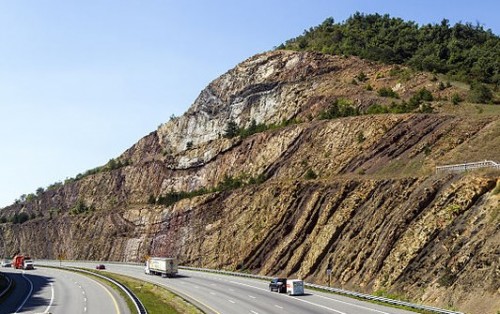 Why are the clouds moving so fast? Is the wind that’s pushing the clouds faster than the wind that’s blowing the trees? I remember, back when I lived in tornado country, hearing that when the winds aloft and the winds on the ground were moving in different directions, a tornado could form. Was that true? Why don’t I know that?
Why are the clouds moving so fast? Is the wind that’s pushing the clouds faster than the wind that’s blowing the trees? I remember, back when I lived in tornado country, hearing that when the winds aloft and the winds on the ground were moving in different directions, a tornado could form. Was that true? Why don’t I know that?
What should I write about for an LWON post on the Fourth of July? How did those guys, Washington and Adams and Jefferson, think they’d ever get away with declaring independence? Did they really expect Mother England wouldn’t smack them down? Did they really think they could make a living out on their own? Why don’t I know that?
Or should I write about fireworks? What is it about fireworks that makes people think “JOY!” rather than “DUCK!”? the rise into the sky like Gothic arches, maybe? Why have people been celebrating with fireworks for so long – seventh century, Wikipedia says? Fireworks’ different colors are caused by compounds made of certain elements – that’s sweetly right, isn’t it? if you want blue, go copper. Are the element colors in fireworks the same as the element colors in atoms that astronomers use to figure out what stars are made of? what the sun is made of? Why don’t I know that?
Speaking of sun colors, I saw a double rainbow the other day. Part of its doubleness was an indisputable second rainbow. But the first rainbow also seemed to repeat itself, ROY G. BIV — that is, once it got to violet, it started over with red and orange again. Is that even possible? Why don’t I know that?
 A long time ago I was an English major and was interested in writing only poems and short stories. One day I was driving the Pennsylvania Turnpike through the Appalachians and noticed the lines in the roadcuts slanted up when I was going up a mountain, and down when I went down; and that seemed to make a kind of primitive sense and I stopped thinking about it. An hour or so later I got to the Alleghenies and noticed that no matter whether I went up or down a mountain, the lines in the roadcut stayed flat. Flat. It made no sense at all. Why did that happen? And why didn’t I know that? Why didn’t I know anything about the factual world?
A long time ago I was an English major and was interested in writing only poems and short stories. One day I was driving the Pennsylvania Turnpike through the Appalachians and noticed the lines in the roadcuts slanted up when I was going up a mountain, and down when I went down; and that seemed to make a kind of primitive sense and I stopped thinking about it. An hour or so later I got to the Alleghenies and noticed that no matter whether I went up or down a mountain, the lines in the roadcut stayed flat. Flat. It made no sense at all. Why did that happen? And why didn’t I know that? Why didn’t I know anything about the factual world?
Over the next couple years, I figured out that I didn’t want to be a poet, I wanted to be a science writer. And I learned how to learn things. So now I know why the roadcut lines in the Appalachians go up and down, and the ones in the Alleghenies are flat — it’s the Alleghenian Orogeny, and God! It’s a great story. Continents! WHAM! Scroooootch. Fooomp. Rumplerumplerumple. Up go the plateau, the Front, and the folded mountains! Makes me feel fireworksy JOY.
_________
Photo credits: looking out the window: thorinside
Famous Sideling Hill roadcut on the Pa. Turnpike, in the rumpling, folded part which is the Appalachians — lines not going up/down but more down/up — by Acroterion
You, Miss, are positively hilarious. But: get out of my head. Everything you say here applies to me, too, a science _editor_.
Thanks for sharing this glimpse!
Fireworksy – love that word! Seeing things on big time and distance scales (quasars, continents, nanotech) does it for me, too. Ain’t science just wonderful? So lucky to be part of it.